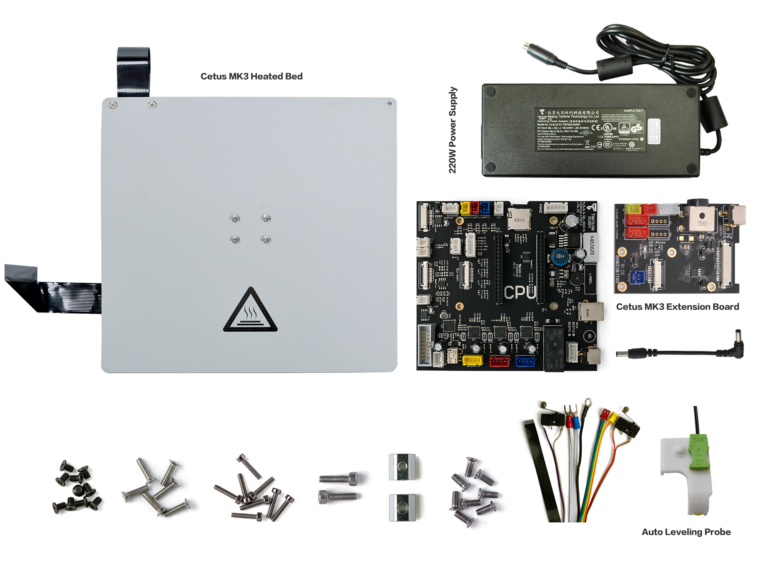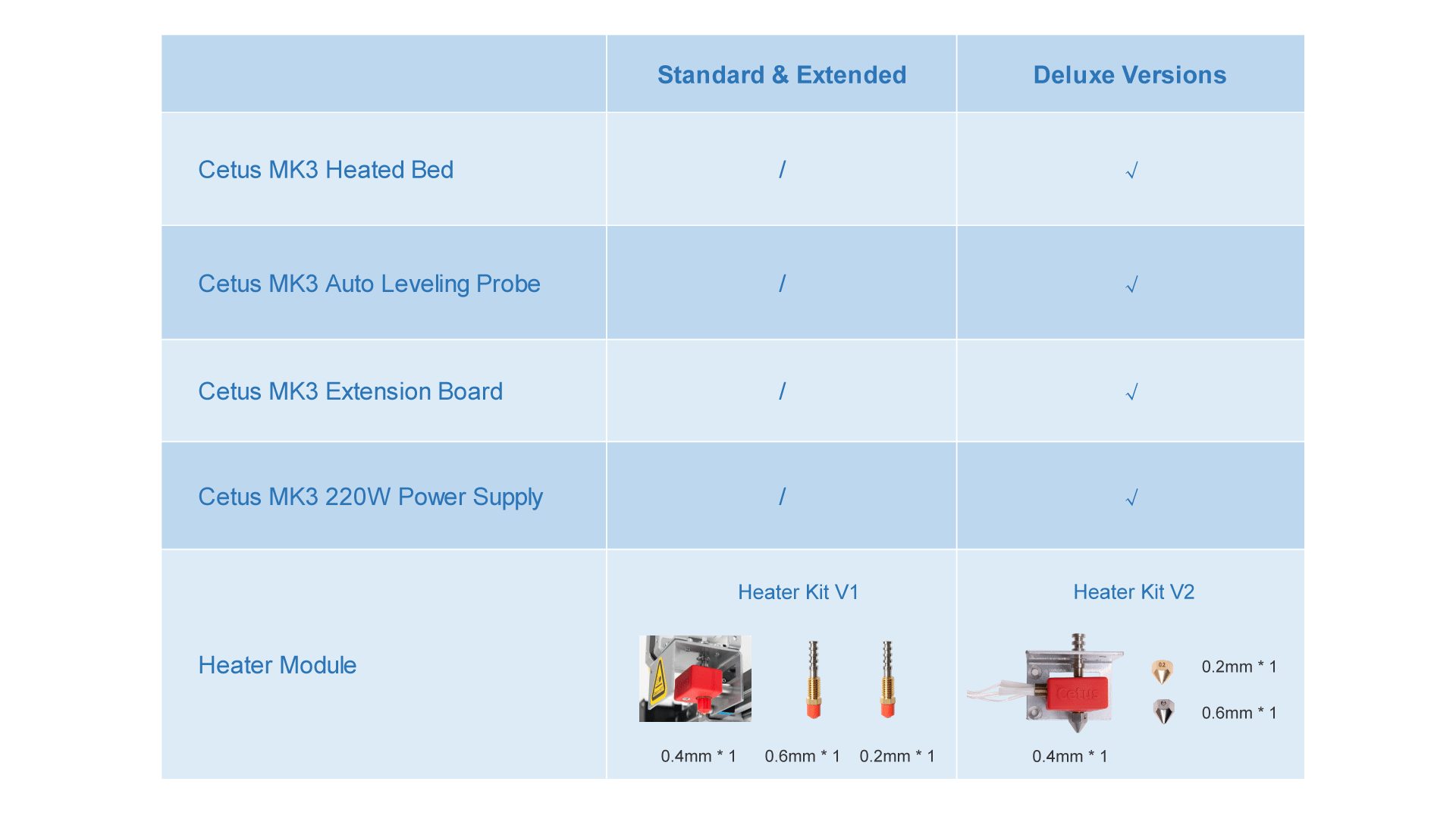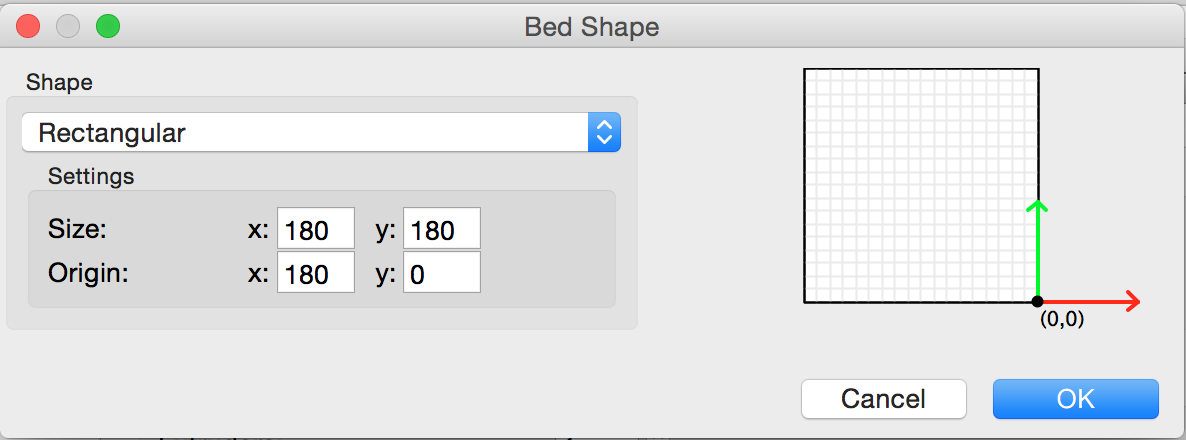

- #Gcode cetus3d driver#
- #Gcode cetus3d manual#
- #Gcode cetus3d upgrade#
- #Gcode cetus3d full#
- #Gcode cetus3d software#

The procedure I use does not allow them to be solved or eliminated, but allows them to be circumvented (bypass? Sorry, I do not know much English). While I was developing it (for myself, reading many different tips on different forums), I ran into some incomprehensible problems. Maybe the order of actions can be different and more optimal. Maybe that’s why I remember all the difficulties so well. M82 set extruder absolute coordinates mode M104 S215 set hotend temperature, warm up Mm_per_line_segment 1 # Necessary for cartesians using rectangular-gridĪfter starting the printer with this config.txt in the Pronterface, I do: After the height goes through this limit, no more compansation will be applied _limit 1 # The compensation algorithm will stop working after this limit, starting from the "dampening_start" parameter. Any height before this setting is still will be compensated fully If you set this setting to a height, the compensation will start to be applied less and less (linearly) until "height_limit" is reached.
#Gcode cetus3d full#
_start 0.5 # Compansation normally is applied for all heights, with full power. _by_two_corners false # G29/31/32 will not work without providing XYAB parameters: XY - start point, AB rectangle size from starting point. _readable true # Human readable formatting of probe table Probe where to move to in Z before it probes, this should be around 5-10mm above the bed _height 5 # The initial height of the probe lift above the table, mm. true # True = When you start the printer, the table is loaded from the file _offsets 20,0,0 # Offset of the probe in relation to the nozzle, mm FALSE, If you are not using all 3 endstops _home false # This can be set if you want the leveling strategy to home before probing. _y_size 5 # The number of points along the Y axis for the case if X! = Y. _x_size 5 # The number of points along the X axis for the case if X! = Y.

# 5 # Number of points on each of the axes. true #The strategy must be enabled in the config, as well as the zprobe module. What am I missing here? What am I doing wrong? I printed without leveling and with leveling and there’s no difference.
#Gcode cetus3d manual#
I tried flashing the latest firmware, an older firmware, changing the leveling strategy, many codes of leveling, rewriting from scratch the config file to match the firmware, following the zprobe manual over and over again, but it all boils down to this: It does the calibration nicely and write the conclusions in the machine control terminal, but all the prints look the same, and it is evident that the calibration is not taken into account. I tried G29, G32, both of them with 3 point calibration, now G31 is the latest. _by_two_corners true # Two point calibration Mm_per_line_segment 1 # necessary for cartesians using rectangular-grid _limit 1 # no compensation to apply after this point (optional) _start 0.5 # compensation decrease point (optional) _height 10 # will move to Z10 before the first probe false # If the saved grid is to be loaded on boot then this must be set to true _offsets 0,0,0 # Optional probe offsets from the nozzle or tool head 5 # The size of the grid, for example, 7 causes a 7x7 grid with 49 points. Thanks to the magic of open standards, I was able to add multicolor capability to my old single-extruder true # The strategy must be enabled in the config, as well as the zprobe module. One nice thing about the Palette+ is that it can be used with more than one printer, so I've been experimenting with getting it to work with my Cetus.Īnd after a couple weeks, and convincing the Palette's manufacturer that they really should support the TierTime printers, it works. There have been some customers reporting significant problems with Prusa's older model of MMU, and it seems like it's still very experimental.
#Gcode cetus3d upgrade#
I bought a Palette+ to give me more options for multicolor printing than just the Multi-Material Upgrade by Prusa. A case in point is the Palette+, a filament splicer for making prints with multiple colors and materials. One huge advantage of stepping into the open source printing world is I now have access to tools and accessories I couldn't use before. "Gcode" is a nearly-universal format for the printing instructions.)

#Gcode cetus3d driver#
(For those not familiar with 3D printing lingo, the "slicer" is the program which takes a 3D model and turns it into gcode instructions for the printer, sort of like a print driver in the 2D printing world. Fortunately, TierTime recently opened up their hobby printers to accept gcode from other software, allowing me to experiment with using Slic3r with my existing printers.
#Gcode cetus3d software#
My new Prusa 3D printer kit is supposed to arrive next week, about three months after I preordered it.ĭuring that long wait I've been learning some of the software used in the open source printer world, including Slic3r, the slicer that's been customized to work with the Prusa printers.


 0 kommentar(er)
0 kommentar(er)
